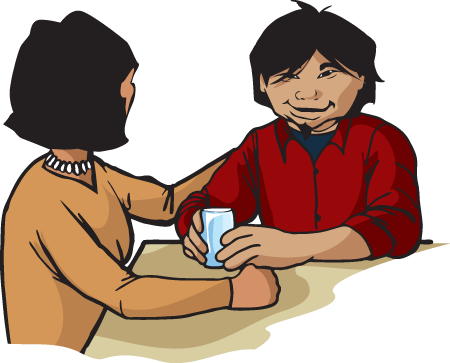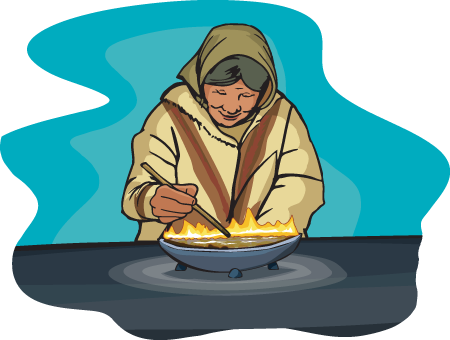 Smoking was never part of Inuit culture. When and how did that change?
Smoking was never part of Inuit culture. When and how did that change?
When non-Inuit (“Qallunaat”) from South, traders, whalers and missionaries began arriving in the North, they brought with them items that were unknown to Inuit, such as sugar, tea, coffee, alcohol, tobacco and drugs. At first, it was mainly Inuit men who started to smoke, but not often because tobacco was difficult to get. Inuit would travel great distances, trading furs for tobacco. It was around the 1940s that more and more people started smoking.
Tobacco prevention and cessation resources:

Nicotine
 An addiction is an unhealthy relationship with anything (person, experience or substance) that affects our mood and causes major problems in our lives.
An addiction is an unhealthy relationship with anything (person, experience or substance) that affects our mood and causes major problems in our lives.
Nicotine is an addictive drug in tobacco. Health experts say that nicotine is even more addictive than heroin and cocaine. At first, smoking may seem like a normal thing to do if the majority of those around you smoke, but before you notice, you are addicted and nicotine already has a hold on you.
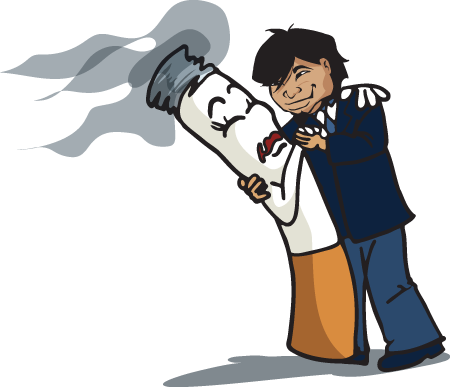 Stage of Addiction
Stage of Addiction
Which stage are you at?
- You appreciate smoking and it is pleasant
- You feel that smoking is a burden
Once you get addicted, it is really hard to quit. Resources are available to help you reach your goal. 
Negative Aspects of Smoking
 1. Smoking is expensive.
1. Smoking is expensive.
The more a person is addicted to cigarettes, the more money is spent to always have a pack readily available.
 2. Smoking harms our health and kills.
2. Smoking harms our health and kills.
Many chemicals in cigarettes can harm your health. Many types of cancer and risks for disease are increased with smoking.
- lung cancer
- mouth cancer
- throat cancer
- chronic lung diseases (bronchitis, asthma)
- heart disease
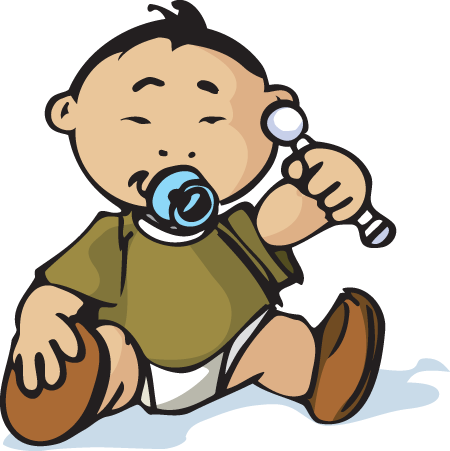 3. Second Hand Smoke.
3. Second Hand Smoke.
Newborns and babies under the age of 1 year, exposed to second hand smoke after birth, have an increased risk of sudden infant death syndrome (SIDS).
Quitting Smoking
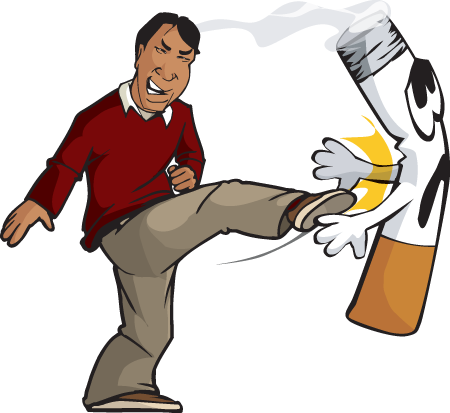 Quitting smoking can be difficult without help, but with some determination it’s not impossible.
Quitting smoking can be difficult without help, but with some determination it’s not impossible.
Gum and Patches
Nicotine gum and patches help reduce the side effects of withdrawal by gradually decreasing the amount of nicotine released in the blood.
Support from Friends and Family
People can experience headaches, depressive moods, persistent feelings of hunger, boredom and irritability after quitting smoking. Others may feel lonely or isolated while people around them are smoking. 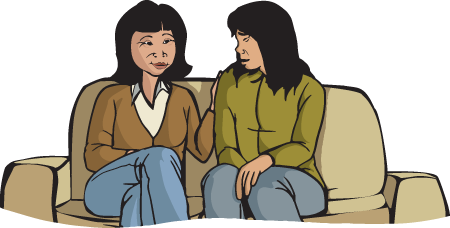
A first step can be to talk to someone about the intent to quit smoking (e.g. family members, friends, co-workers). Consulting a health professional about your concerns can also help. The quitting smoking support program will soon offer tools and resources to help people quit. 